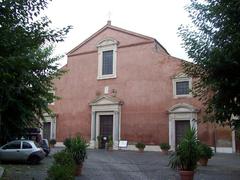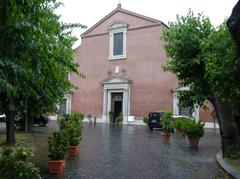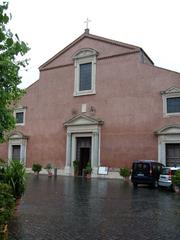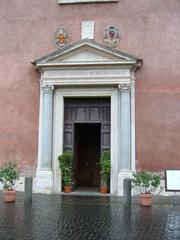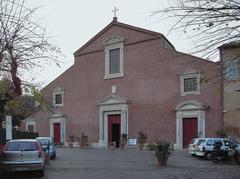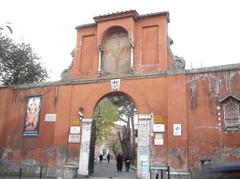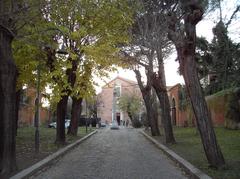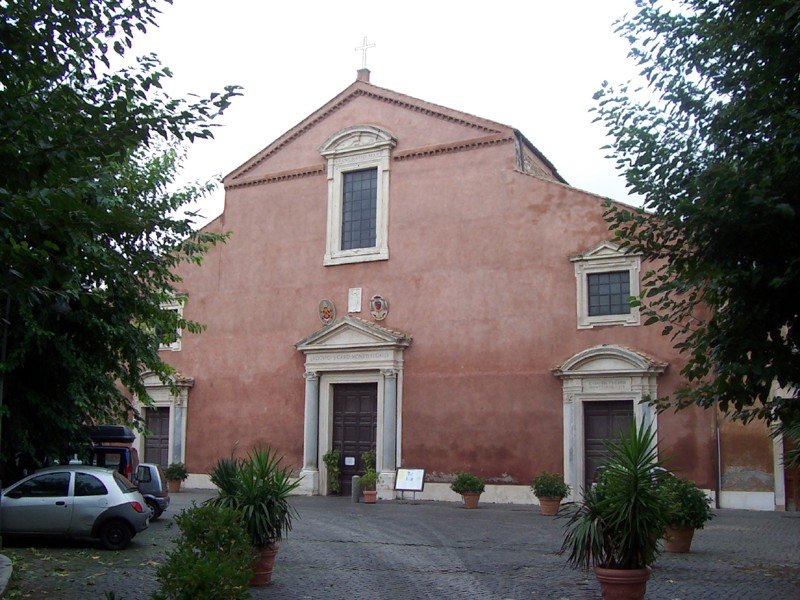
San Pancrazio Rome Visiting Hours, Tickets, and Historical Sites Guide
Date: 14/06/2025
Introduction
San Pancrazio in Rome stands as a captivating testament to early Christian history, architectural evolution, and enduring religious significance. Nestled in the Gianicolense district along the historic Via Aurelia and adjacent to the expansive Villa Doria Pamphilj park, the site encompasses both the Basilica di San Pancrazio and the ancient Catacombs of San Pancrazio (also known as the Catacombs of Ottavilla). The catacombs, dating back to the 3rd and 4th centuries CE, are the burial place of Saint Pancras—a young Christian martyr whose steadfast faith during the Diocletianic Persecution inspired generations of believers. Above this sacred subterranean complex lies the basilica, initially commissioned by Pope Symmachus around the 5th century and later rebuilt and restored, evolving into a place of pilgrimage, worship, and artistic heritage.
This comprehensive guide provides essential information on visiting hours, ticketing, accessibility, guided tours, and practical travel tips. It also explores San Pancrazio’s broader cultural and spiritual context, including its role as a pilgrimage destination, charitable traditions, and its global influence.
Whether you are a history enthusiast, pilgrim, or traveler seeking to explore Rome’s early Christian heritage, San Pancrazio offers a serene and profound encounter with the past, enriched by ongoing archaeological research and vibrant community life. For more details, consult sources such as the Official Rome Tourism Site, San Pancrazio Official Site, and the Oxford Handbook of Early Christian Archaeology.
Historical Overview
Early Christian Rome and the Origins of San Pancrazio
The Catacomb of San Pancrazio, also called the Catacomb of Ottavilla, dates to the 3rd and 4th centuries CE. Early Christians in Rome, often persecuted, created underground burial places for their dead and martyrs. This catacomb is especially significant as the burial site of Saint Pancras (San Pancrazio), whose unwavering faith became a symbol for Christians during Roman imperial persecution (Official Rome Tourism Site).
The Martyrdom of Saint Pancras
Pancras, originally from Phrygia (modern Turkey), was brought to Rome as a child. During the Diocletianic Persecution (303–311 CE), he was arrested and beheaded for refusing to renounce Christianity. His body was buried in the catacomb by the Christian matron Ottavilla, giving the catacomb its alternate name (The Oxford Handbook of Early Christian Archaeology).
Development of the Catacomb and Basilica
The growing cult of Saint Pancras led to the construction of a basilica above the catacomb by Pope Symmachus (498–514 CE). The basilica became a pilgrimage site, later expanded by Pope Gregory the Great and rebuilt by Pope Honorius I after war damage, resulting in a three-nave design still visible today (Rome Archaeological Guide, 2018).
Site Features and Artistic Heritage
Catacomb Structure and Notable Features
The catacomb is divided into three main cubicles:
- Cubicle of Botrys: Features an inscription with the rare early Christian term “christianós.”
- Cubicle of Saint Felix: Decorated with sea motifs—ships and fishes—symbolic of early Christian iconography.
- Cubicle of Saint Sophia: Contains a white-plastered arcosolium associated with Saint Sophia and her daughters (Catacombs of Rome Official Site).
Though much of the catacomb has collapsed, surviving sections demonstrate early Christian burial customs.
Basilica and Interior Highlights
The basilica’s modest facade and portico contrast with its rich interior, which follows a traditional basilica plan. The raised sanctuary, a 16th-century fresco of the Death of the Virgin, and side-wall frescoes attributed to Antonio Tempesta are notable artistic features. The high altar, under which St. Pancras’s relics are enshrined, is the focus of worship and devotion (Roman Churches Wiki; HelloMondo).
A modern bronze door, installed in 2013, narrates key moments from St. Pancras’s life, blending contemporary art with ancient tradition.
Visiting Information
Visiting Hours and Tickets
- Basilica: Open daily, usually 09:00–12:00 and 16:00–19:00; hours may vary for religious services or special events (San Pancrazio Official Site).
- Catacombs: Open Wednesday mornings (9:30–12:00), Wednesday afternoons (16:00–17:00), and Thursday mornings (10:00–12:00). Guided tours only; advance booking required. Entry is free, but donations are encouraged (San Pancrazio Official Site; Rome Travel Tips).
- Accessibility: The basilica is mostly wheelchair accessible, but the catacombs have stairs and narrow passages.
How to Get There
- Public Transport: Bus lines 44, 75, and 870 stop near Piazza di San Pancrazio.
- Walking: Easily accessible from Trastevere or Gianicolo.
- Car: Limited parking; public transport is recommended.
Facilities
- Restrooms: Available on site.
- Museum: The Museo di S. Pancrazio displays early Christian artifacts.
- Photography: Permitted in the basilica; prohibited in the catacombs.
Visitor Tips
- Best Time to Visit: Spring and early summer (April–June) for pleasant weather and lush park surroundings (Rome Actually).
- Dress Code: Modest attire required (shoulders and knees covered).
- Footwear: Sturdy shoes recommended for uneven surfaces.
- Nearby Attractions: Villa Doria Pamphilj park, Trastevere neighborhood, Janiculum Hill, and other historic churches (Roma Wonder).
Spiritual and Cultural Significance
Pilgrimage and Community
San Pancrazio remains a vital site for pilgrims, especially on St. Pancras’s feast day (May 12). The basilica is an active parish and a center for community events and religious services (Untold Italy). Charitable traditions continue, with visitors encouraged to donate food or funds for local charities (Trastevere Rome).
St. Pancras’s Global Legacy
St. Pancras is venerated as a patron of oaths and truthfulness, and his cult spread widely across Europe. Notably, St. Pancras railway station in London is named after a monastery dedicated to him (Catholic Magazine News).
FAQ
Q: What are the San Pancrazio visiting hours?
A: Basilica: typically 09:00–12:00 and 16:00–19:00; Catacombs: Wednesday and Thursday mornings and Wednesday afternoons (guided tours only).
Q: Are tickets required?
A: Entry is free; catacomb visits require advance booking.
Q: Is the site accessible?
A: The basilica is accessible, but the catacombs are not suitable for wheelchairs.
Q: Can I take photos?
A: Photos are allowed in the basilica, but not in the catacombs.
Q: What are the best nearby attractions?
A: Villa Doria Pamphilj, Trastevere, and Janiculum Hill.
Contact and Further Resources
- Address: Via di San Pancrazio, 00152 Rome, Italy
- Phone: +39 06 581 3940
- Website: www.sanpancrazio.org
For the latest updates on hours, events, and group bookings, consult the official website or contact the parish office.
Plan Your Visit
San Pancrazio offers a unique convergence of early Christian martyrdom, archaeological heritage, and living tradition. From the solemn underground catacombs to the art-filled basilica, the site bridges ancient faith and contemporary culture. Carefully managed access, guided tours, and charitable traditions ensure both preservation and an enriching visitor experience.
For additional travel tips and guides, download the Audiala app, and explore further resources:
- Official Rome Tourism Site
- The Oxford Handbook of Early Christian Archaeology
- Rome Archaeological Guide
- Catacombs of Rome Official Site
- San Pancrazio Official Site
- Catholic Magazine News
- Trastevere Rome
- Roman Churches Wiki
- HelloMondo
- Roma Wonder
- Journeys to Italy
- Rome Travel Tips
- Untold Italy
- Rome Actually
- Wikipedia
